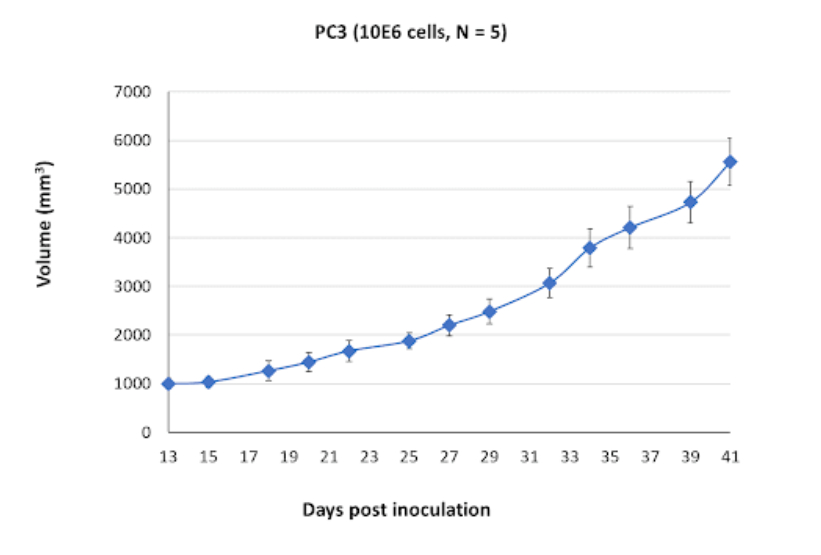About PC-3
The PC-3 cell line, derived in 1979 from a bone metastasis of a 62-year-old Caucasian male patient with prostate cancer, serves as an essential model for studying aggressive forms of the disease. Morphologically, PC-3 cells closely resemble epithelial cells and grow as adherent monolayers in vitro, providing a convenient system for experimental investigations. A key characteristic of the PC-3 cell line is the absence of functional androgen receptors and the lack of prostate-specific antigen (PSA) production. This distinguishes PC-3 cells from other prostate cancer cell lines such as LNCaP and 22Rv1. The loss of androgen receptor expression and PSA production in PC-3 cells is of clinical significance since it reflects the androgen-independent nature of this cell line.
Androgen-independent prostate cancer is known for its aggressive behavior and resistance to hormonal therapies, making PC-3 cells a valuable model for studying this challenging subtype of prostate cancer. Moreover, PC-3 cells possess a high metastatic potential, which makes them particularly valuable for investigating the mechanisms and factors involved in prostate cancer metastasis. Their ability to replicate the metastatic behavior observed in patients provides researchers with a powerful tool to study molecular processes underlying metastatic spread.
Comparative studies using whole cell patch clamping techniques have revealed distinctive electrical properties of PC-3 cells compared to less aggressive prostate cancer cell lines like LNCaP. PC-3 cells display higher capacitance, reflecting their greater cellular membrane area and potentially contributing to their aggressive phenotype.
Pharmacologically, PC-3 cells exhibit notable resistance to conventional chemotherapy and radiation therapies, mirroring the challenges encountered in clinical settings. This resistance to standard treatments underscores the need for novel therapeutic strategies against aggressive prostate cancer, and PC-3 cells offer a valuable platform for testing and evaluating the efficacy of experimental therapies.
PC-3 Tumor Kinetics in the SRG™ Rat

In vivo tumor models generated from PC-3 cells tend to display necrotic regions and exhibit angiogenesis, indicating compromised blood supply and active formation of new blood vessels to sustain tumor growth. These characteristics mimic the tumor microenvironment observed in aggressive prostate cancer cases, providing researchers with a relevant in vivo system to investigate tumor behavior and responses to interventions.
Products & Services
Xenograft Efficacy Studies
Includes collection of blood, tissues & tumor for ADME, PK/PD and analysis.
(Bi)weekly Tumor Sampling
Via fine needle aspiration (FNA). For longitudinal evaluation of drug exposure, histology and gene expression.
OncoRats
Cutting edge models optimized for engraftment.
Get help with your research by scheduling a call with Hera.
References
- Laniado, Marc, et al. “Voltage-Gated K(+) Channel Activity in Human Prostate Cancer Cell Lines of Markedly Different Metastatic Potential: Distinguishing Characteristics of PC-3 and Lncap Cells.” The Prostate, 22 Feb. 2001, pubmed.ncbi.nlm.nih.gov/11241548/.
- Tai, Sheng, et al. “PC3 Is a Cell Line Characteristic of Prostatic Small Cell Carcinoma.” Wiley Online Library, 22 Mar. 2011, onlinelibrary.wiley.com/doi/10.1002/pros.21383.
